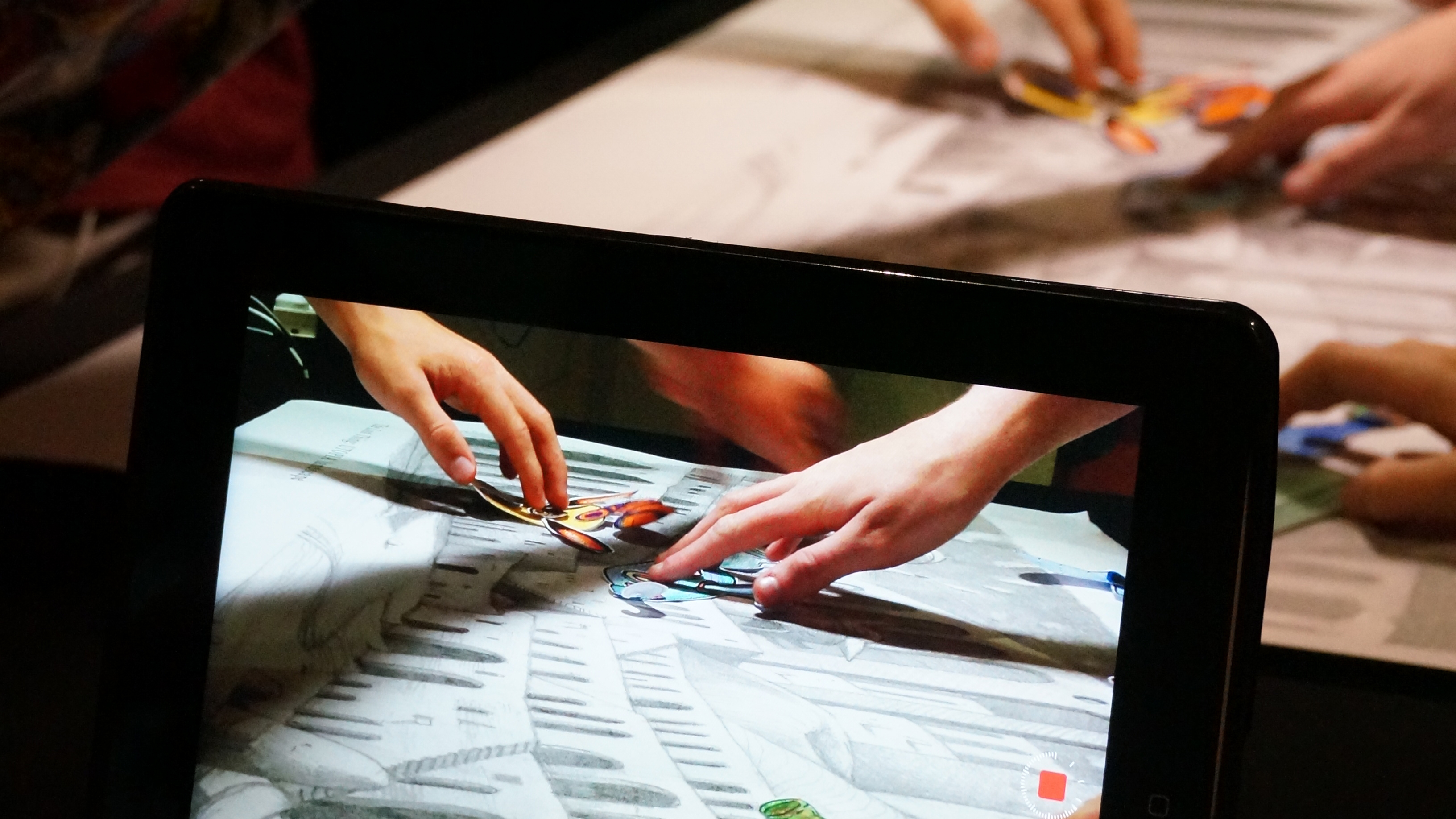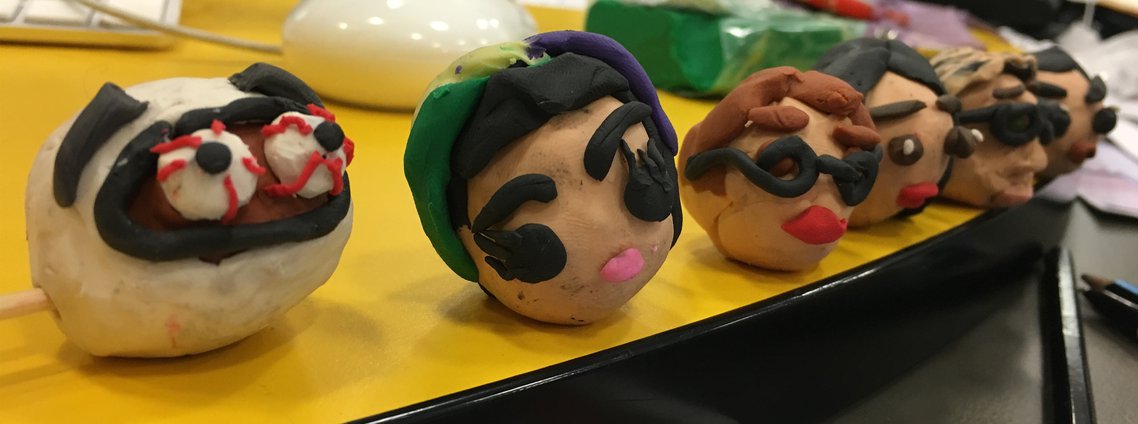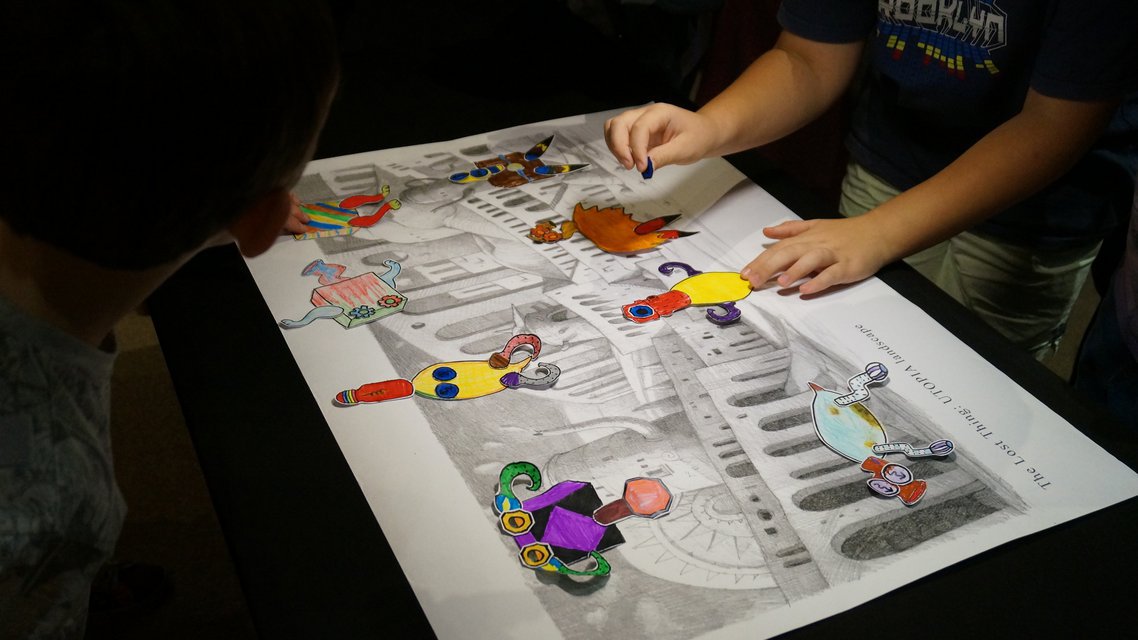
Make a stop-motion animation
What is stop motion animation?
Animation is the process where artificial movement is created by capturing a series of drawings or movements one by one. Small changes in the position of the drawing or object, recorded frame by frame, create the illusion of movement.
Be inspired by this stop motion animation film by students from Table Cape Primary School.
Recommended Year levels: 3-8
Learning areas: English, Media Arts, Digital Technologies
Types of stop motion animation
If you are not sure what type of animation to make, here is a list to help you decide. Some types of animation are easier than others. Think about what materials you already have that will work for your animation.
Claymation - three-dimensional (3D) figures are made out of clay or plasticine and filmed within a 3D set or against a background.
Found objects - characters can be created out of found objects such as household utensils, bottle tops, pencils, Lego etc.
Cut-out - two-dimensional (flat) characters and worlds are made from cut-out paper, pictures, illustrations, found objects and silhouette figures.
Pixelation – people's bodies can be animated one frame at a time.
To get your head around how moving images work watch the video below:
Making your own stop-motion animation
Equipment
A device to capture images – mobile phone or iPad or computer and web camera
Animation software or app– there are many out there but Stop motion studio is a good free app to get you started
Something to keep your camera or device steady – tripod, homemade stand
If you don’t have a tripod, an empty egg carton works well for small devices. Or you can build an iPad or phone stand out of Lego or Duplo. If you need a ‘birds-eye view’, use the edge of a table or cupboard, making sure you can still see the screen. Blu Tack can also help keep the device in place. Keeping your device steady is essential, so be careful not to BUMP it!

The story
Animations always have a story and script before filming starts. Write a story and plan your script. Start with a simple story and plan all your shots using a storyboard. This will help you remember the story as you animate.
If you want a deep-dive into how to script a great story, check out ACMI’s Film It.

Characters, props and backgrounds
You can create your own moveable characters. Use clay, plasticine, photographs, paper cut outs, drawings, silhouettes, Lego, blocks and toys to create characters and sets. You can create interesting characters out of found objects such as household utensils, bottle tops and pencils. Remember that animation is simply giving life to inanimate objects; let your imagination be your guide!
Handle your creations carefully as they can break easily. If you can, make doubles of main characters.
You can: make backgrounds from dollhouses, posters, pictures, blocks, construction kits, create your own 3D sets using boxes and art materials, or use real locations (inside and outside) .
The sketch to clay section of ACMI's The Magic of Aardman Education Resource offers great activities to help design and create your own characters.

Setting up the shoot
Plan how you are going to shoot your animation and then find a good place to set it up. Animation can take time to shoot and you don’t want it to be knocked.
Flat materials such as drawings and cut-outs are usually filmed on a flat surface with the camera on a stand or tripod (or edge of table) looking down on them. Puppet animation and Claymation can be shot from any angle, just like live action, so you could create a mini world for your characters in a box or a corner of your room. Pixilation and found objects can be filmed from either perspective, and you will need to decide what works best for your project.
Collect your characters and props, have everything you think you need together before you start.

Set your frame rate
Most stop-motion apps and programs let you set the frame rate. This is how many frames, or photos, you'll capture each second. Most professional animations operate at 24 frames per second, but you can get away with as little as 8 frames per second. We recommend setting your project to 8-12 frames per second to begin with.

Lighting
It is important to light your scene properly. A lamp on either side of the camera works well. Keep the light constant and watch for shadows made by people moving nearby. Because animation takes a long time, the lighting can change in the room where you are working so, if you use lamps, you can control the light.

Composition
Make sure your background fills the frame to create a professional look for your film. Always check what is in your frame before you begin animating to make sure your audience sees what you want them to see. If the camera is bumped, don't try to re-align the shot. Instead, set the camera with a different shot type, and you will have created a natural edit.
Tip: You don’t want to shoot your entire film from the same position. So once you’ve captured the action or movement you want, move your camera to a new position to capture the next piece of action or movement from a different position. Try a variety of shots, such as close-ups, mid-shots and long-shots.

Animating
Experiment before you begin making your masterpiece
Two of the most important things to think about when making a stop motion animation are frames and movement. Try experimenting with the relationship between the two before you start filming.
| 1. Move your character from one side of the frame to the other. The first time, take 3 shots to move them across the frame. Do it again but this time have them move across the frame in 12 shots. Watch the playback, what do you see? |
| 2. Put your character in the centre of the frame. Try moving parts of the character in ways you might need to in your story. How do they look? Try adding some frames where the character doesn’t move, these are known as pauses. They can help to slow the movement and help the audience read what is happening on screen. |

It’s time to start capturing frames for your stop motion film!
Ensure your camera shot is in focus. Depending on your equipment you should be able to adjust the focus either via your camera, webcam settings or touching the screen.
Depending on what stop motion animation software you’re using, you might notice it has a tool called ‘onion skinning’. What this does is show you the last frame you shot, as well as what your camera is seeing live. This is a really useful tool because you can see exactly how small or big to make the next movement of your characters.
Tip: Your software should have a timeline, so can you see how much footage you have captured. Remember, you don’t want your animation to move so fast your audience can’t tell what is happening. Play back every now and then to check your progress.

Sound, Music and SFX
Lip-syncing in animation is tricky and time-consuming. Consider alternatives like a voiceover narrator or text on screen in place of lip-syncing dialogue. Some apps have built in sound recording which allows you to record the voice-over while the film plays.
Music and sound effects play a powerful role in reinforcing the mood of an animation and are used to great effect in influencing audience emotion. Music can change the whole meaning of a scene when used well. It can affect all the other elements by adding suspense, mystery, excitement and drama. Music also establishes the style of the piece. Try different pieces of music and notice the difference.
Copyright is a huge issue with moving image productions. It is best to create original music wherever possible. Acid or Audacity on PC platform or Garage Band on Mac platform, are excellent software programs to help create music.

Screening and sharing
Make sure you have a screening of your work so that you can share it with classmates, friends and family. You could make tickets, provide popcorn, and turn the lights down!
Going further: principles of animation
To take your animation next level watch this video to see the 12 principles of animation. Professional animators use these rules to help the animation look realistic, you can find out heaps more here.